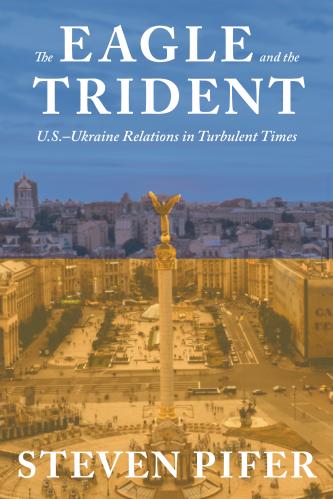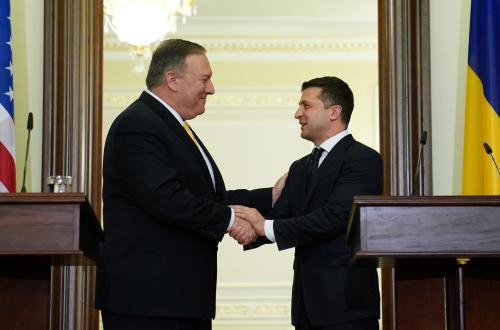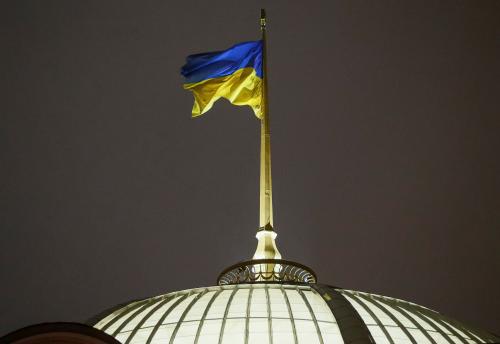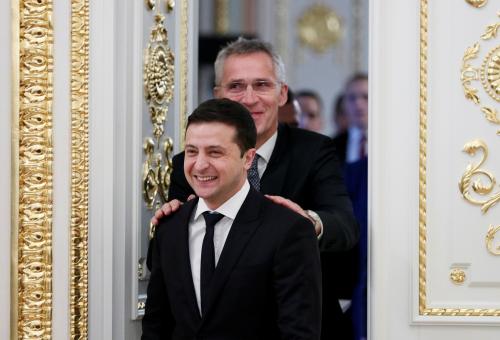Six years after the Maidan Revolution, Ukraine has made some progress, but it will be critical for President Zelensky’s government to complete the reform process, reduce corruption, and find a settlement for the conflict in Donbas to develop as a stronger and more resilient state, argues Steven Pifer. This post originally appeared on Stanford University’s Medium.
February 21 marks the sixth anniversary of the end of Ukraine’s Maidan Revolution. Three months of largely peaceful protests concluded in a spasm of deadly violence. President Victor Yanukovych fled Kyiv and later Ukraine, prompting the Rada (Ukraine’s parliament) to appoint acting leaders pending early elections.
Today, Ukraine has made progress toward meeting the aspirations that caused Ukrainians to fill the streets of Kyiv: to become a normal European democracy with a growing economy and reduced corruption. Unfortunately, the country finds itself entangled in an ongoing low-intensity war with Russia, with uncertain prospects for settlement.
The Maidan Revolution
Ukraine in November 2013 sat primed to sign an association agreement with the European Union, a document to establish a deep and comprehensive free trade arrangement and bring Ukraine closer to Europe. On November 21, however, the Ukrainian government announced it would “suspend” preparations to sign the agreement. Within hours, thousands took to the streets of Kyiv to protest, and the Maidan Revolution (named for the central square in Kyiv) — also called the “Revolution of Dignity” — had begun.
Over the ensuing three months, the protests continued and morphed into a broader expression of popular discontent with Mr. Yanukovych’s growing authoritarianism as well as his decision not to sign the EU association agreement. Some days saw hundreds of thousands take part in the demonstrations. The protests remained largely peaceful until mid-February 2014. Special police units fired on the crowd on February 19–20, killing some 100 and wounding many more.
European diplomats rushed to the Ukrainian capital and brokered overnight a settlement between Mr. Yanukovych and opposition leaders. The latter probably could not have sold the settlement to protestors in the streets, but they had little chance to try. Mr. Yanukovych signed the agreement and disappeared, turning up days later in Russia.
On February 22, the Rada appointed an acting president and acting prime minister. They made clear their desire to get on with domestic reform and set integration with Europe — specifically, signing the association agreement with the European Union — as their top foreign policy priority.
War with Russia
Within days, however, Ukraine found itself at war with Russia. Russian soldiers, with insignias removed from their combat fatigues, seized Crimea. The Ukrainians referred to the soldiers as “little green men.” Russian President Vladimir Putin at first claimed they belonged to a local defense militia but weeks later admitted they were Russian soldiers and awarded their commanders commendations in a Kremlin ceremony. Russia almost immediately annexed Crimea, an illegal action rejected by most of the world.
In April 2014, little green men began occupying administrative buildings in key cities and territory in the eastern Ukrainian region of Donbas. Ukrainian security and military forces resisted. Russia fueled things by providing leadership, funding, heavy weapons, ammunition, other supplies and, in some cases, regular units of the Russian army to the fight, now about to enter its seventh year. The conflict has claimed some 14,000 lives as well as causing between 1.5 and 2 million people to abandon their homes.
The German and French leaders brokered a settlement in February 2015, often referred to as Minsk II. While the line of contact between Ukrainian and Russian/Russian proxy forces in Donbas has largely stabilized since then, the conflict continues to simmer. Numerous attempts at a full ceasefire have failed. In most cases, blame for ceasefire violations and for failure to withdraw heavy weapons away from the line of contact lies with the Russians and their proxies. Absent an end to the fighting, the sides have made little progress toward implementation of the political and other provisions of Minsk II.
Domestic Change
Petro Poroshenko emerged as victor in a special presidential election in May 2014. The following month he signed the association agreement. He and his government made early progress in tackling the country’s reform needs. They stabilized the economy, cleaned up the government’s precarious financial situation (in part by raising tariffs to cover the costs of producing heat and electricity), consolidated the banking sector, and introduced a more transparent system for government procurement.
In 2016, however, the pace of reform slowed. Ukrainians questioned the lack of progress in fighting corruption, in particular the failures to rein in the country’s oligarchs and to bring to account those responsible for the 2014 shootings on the Maidan. Mr. Poroshenko’s approval ratings accordingly fell.
The lack of progress in reducing corruption as well as the ongoing conflict with Russia crippled Mr. Poroshenko’s reelection prospects. He lost by a landslide in an April 2019 run-off to Volodymyr Zelensky, an actor and political neophyte who promised dramatic progress on the corruption front, reforms to boost economic growth and a dedicated effort to end the conflict in Donbas. Mr. Zelensky’s political party won an absolute majority in the October 2019 parliamentary election, as a wave of young new faces entered the Rada. They in turn appointed a young cabinet, with an average age of 37.
Zelensky’s Challenges
Mr. Zelensky and Ukraine face two challenges. First, they need to complete the critical mass of reforms and reduce corruption so that the Ukrainian economy grows faster and living standards can begin to catch up with those of Ukraine’s neighbors in Central Europe and the Baltics. Second, they have to find a way end settle the conflict in Donbas.
Mr. Zelensky and his inner circle see ending the Donbas conflict as the most urgent priority, as Ukrainians die nearly every week along the line of contact. The Ukrainian president held his own in a December 9, 2019 meeting with Mr. Putin, also joined by the German and French leaders, but a major gulf separates Kyiv and Moscow on key issues, such as when Ukraine will regain sovereignty over all of Donbas and the ultimate status of that region.
Unfortunately, the Kremlin appears content to continue the simmering conflict as a means to pressure, destabilize and distract Kyiv and to make it harder for the Ukrainian leadership to get on with its goal of building a successful and prosperous state. Absent a change in Moscow’s approach, Mr. Zelensky will not be able to achieve peace in Donbas (Crimea will, in any case, remain as long-term point of dispute between Ukraine and Russia). People close to the Ukrainian president suggest that, if the Russians continue their current course, Ukraine at some point may adopt a Plan B. That could entail building a virtual wall along the line of contact and pushing the entire economic burden of occupied Donbas on to Russia.
Mr. Zelensky and his government cannot on their own resolve Donbas. They can only hope that, as the costs of occupation mount for Russia, including the costs imposed by U.S. and Western economic and financial sanctions, the Kremlin will look for a different course of action.
Mr. Zelensky and his government can, however, effect domestic reform by themselves and take other key steps, such as curbing the oversized political influence of the country’s oligarchs. The government has secured a number of reform laws over the past six months (some perhaps not as well thought-out as they might have been) and has set ambitious plans for domestic and future growth. If they can deliver on those plans — possible though not guaranteed — Ukraine will develop as a stronger and more resilient state. That will be a state better able to withstand Russian pressure and a state reflective of the aspirations that triggered the Maidan Revolution.








Commentary
Ukraine: Six years after the Maidan
February 21, 2020